Yinghua Wang
An Efficient Pre-Processing Method for 6G Dynamic Ray-Tracing Channel Modeling
Jan 06, 2025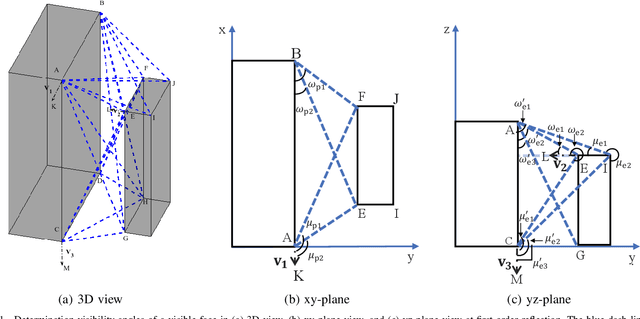
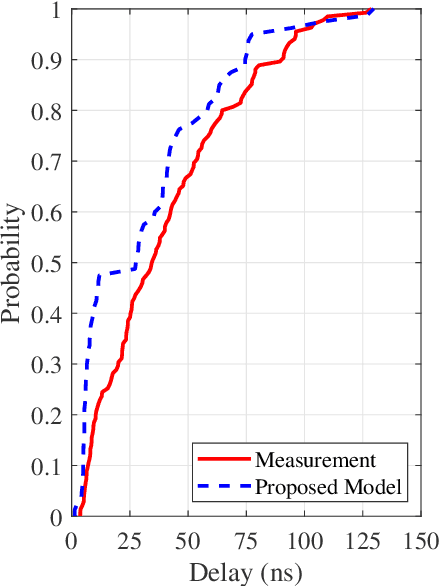
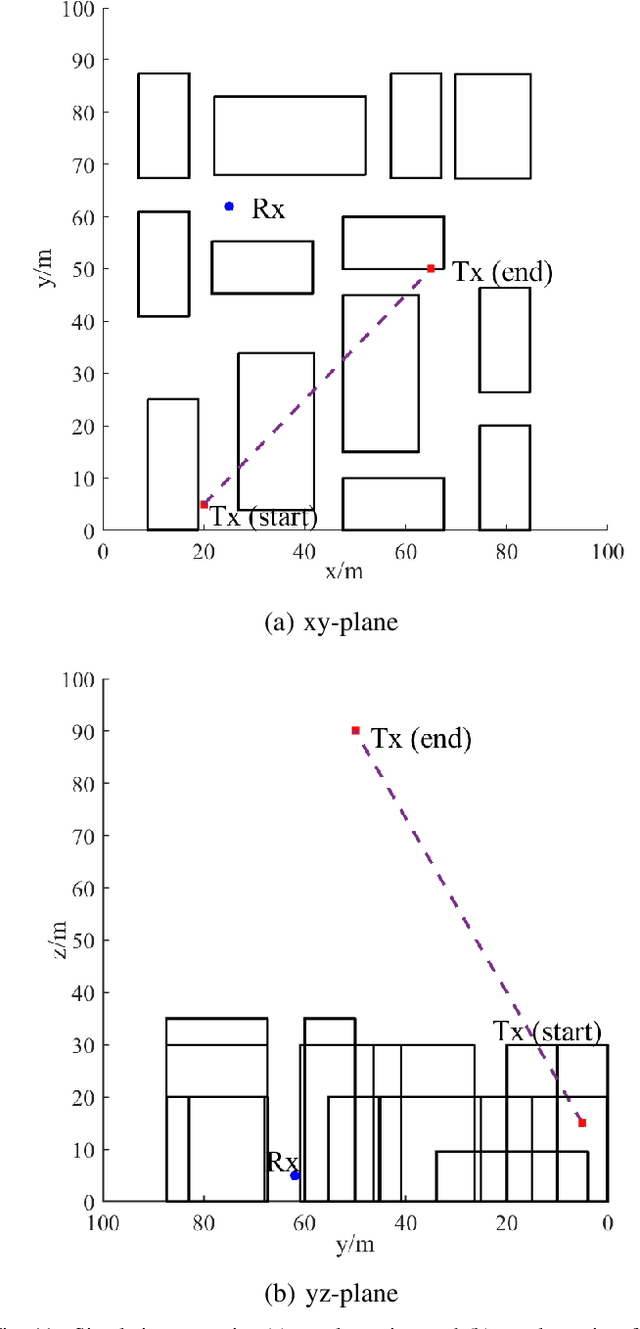
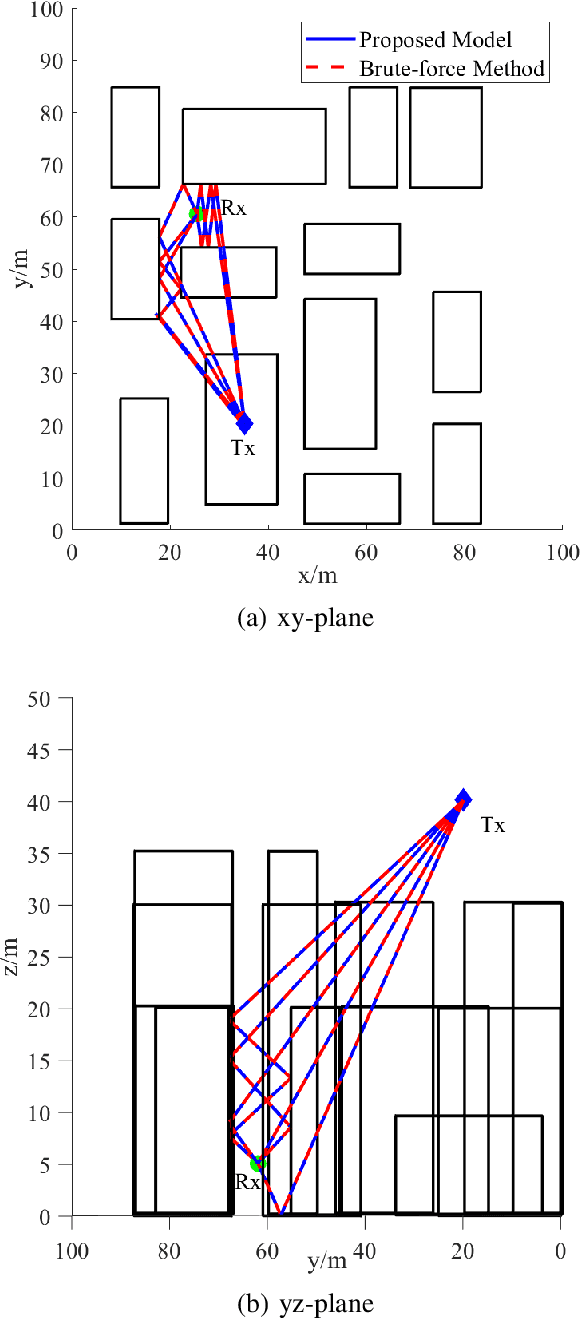
Abstract:The ray-tracing is often employed in urban areas for channel modeling with high accuracy but encounters a substantial computational complexity for high mobility scenarios. In this paper, we propose a novel pre-processing method for dynamic ray-tracing to reduce the computational burden in high-mobility scenarios by prepending the intersection judgment to the pre-processing stage. The proposed method generates an inter-visibility matrix that establishes visibility relationships among static objects in the environment considering the intersection judgment. Moreover, the inter-visibility matrix can be employed to create the inter-visibility table for mobile transmitters and receivers, which can improve the efficiency of constructing an image tree for the three-dimensional (3D) dynamic ray-tracing method. The results show that the proposed pre-processing method in dynamic ray-tracing has considerable time-saving compared with the traditional method while maintaining the same accuracy. The channel characteristics computed by the proposed method can well match to the channel measurements.
An Improved Equiangular Division Algorithm for SBR based Ray Tracing Channel Modeling
Aug 22, 2022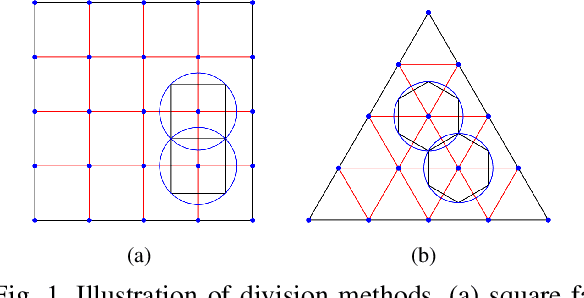
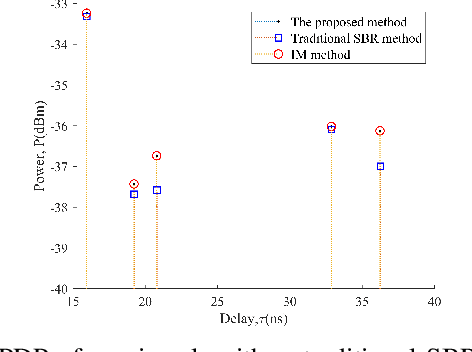
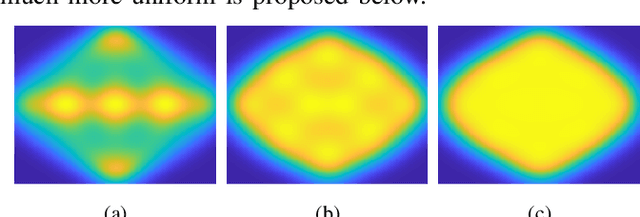
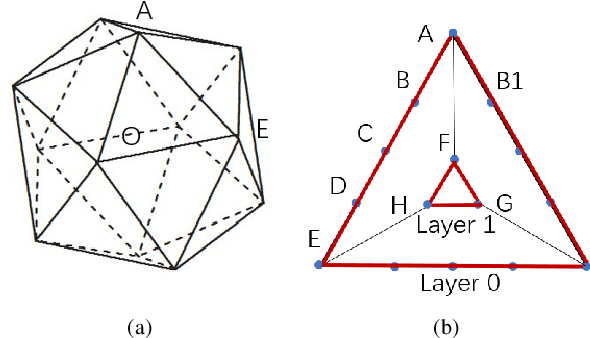
Abstract:Compared with image method (IM) based ray tracing (RT), shooting and bouncing ray (SBR) method is characterized by fast speed but low accuracy. In this paper, an iterative precise algorithm based on equiangular division is proposed to make rough paths accurate, allowing SBR to calculate exact channel information. Different ray launching methods are compared to obtain a better launching method. By using equiangular division, rays are launched more uniformly from transmitter (Tx) compared with the current equidistant division method. With the proposed iterative precise algorithm, error of angle of departure (AOD) and angle of arrival (AOA) is below 0.01 degree. The relationship between the number of iterations and error reduction is also given. It is illustrated that the proposed method has the same accuracy as IM by comparing the power delay profile (PDP) and angle distribution of paths. This can solve the problem of low accuracy brougth by SBR.
An Improved Ray Tracing Acceleration Algorithm Based on Bounding Volume Hierarchies
Aug 22, 2022



Abstract:Ray tracing is an efficient channel modeling method. However, the traditional ray tracing method has high computation complexity. To solve this problem, an improved bounding volume hierarchies (BVH) algorithm is proposed in this paper. Based on surface area heuristic (SAH) and spatial distance, the proposed algorithm can effectively reduce the number of unnecessary intersection tests between ray and triangular facets. In addition, the algorithm fully considers the influence of ray action range, which can not only make up for the defects of spatial division based on uniform grid method and k-dimensional (KD) tree, but also solve the problem of unsatisfactory spatial division based on traditional BVH algorithm. The simulation results show that compared with the traditional BVH algorithm, the proposed algorithm can improve the computation efficiency by 20% to 35% while ensuring the computation accuracy.
A Weighted Random Forest Based PositioningAlgorithm for 6G Indoor Communications
Aug 22, 2022



Abstract:Due to the indoor none-line-of-sight (NLoS) propagation and multi-access interference (MAI), it is a great challenge to achieve centimeter-level positioning accuracy in indoor scenarios. However, the sixth generation (6G) wireless communications provide a good opportunity for the centimeter-level positioning. In 6G, the millimeter wave (mmWave) and terahertz (THz) communications have ultra-broad bandwidth so that the channel state information (CSI) will have a high resolution. In this paper, a weighted random forest (WRF) based indoor positioning algorithm using CSI based channel fingerprint feature is proposed to achieve high-precision positioning for 6G indoor communications. In addition, ray-tracing (RT) is used to improve the efficiency of establishing channel fingerprint database. The simulation results demonstrate the accuracy and robustness of the proposed algorithm. It is shown that the positioning accuracy of the algorithm is stable within 6 cm in different indoor scenarios with the channel fingerprint database established at 0.2 m intervals.
An SBR Based Ray Tracing Channel Modeling Method for THz and Massive MIMO Communications
Aug 22, 2022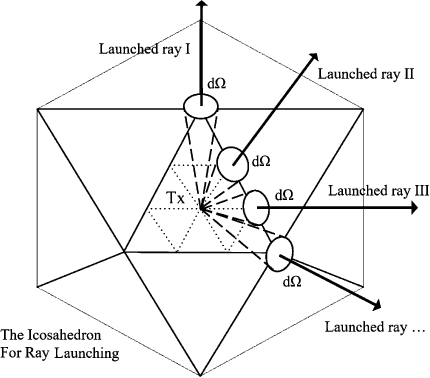
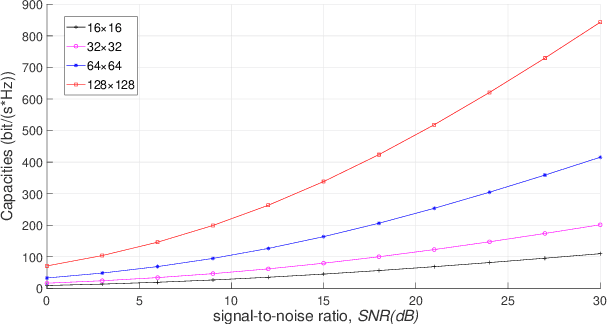
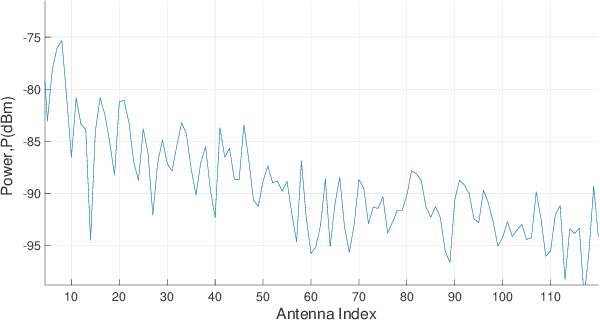
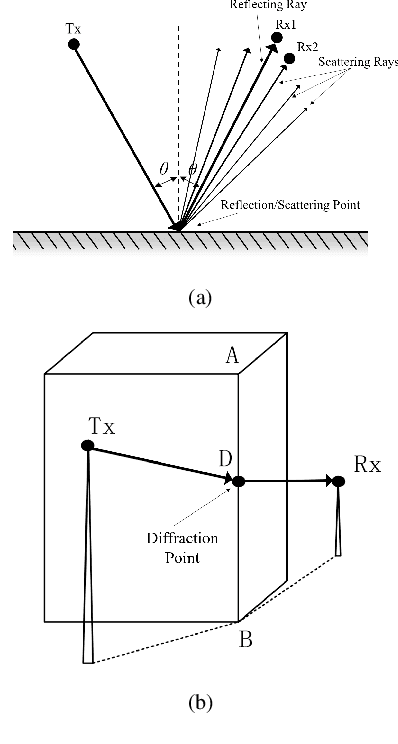
Abstract:Terahertz (THz) communication and the application of massive multiple-input multiple-output (MIMO) technology have been proved significant for the sixth generation (6G) communication systems, and have gained global interests. In this paper, we employ the shooting and bouncing ray (SBR) method integrated with acceleration technology to model THz and massive MIMO channel. The results of ray tracing (RT) simulation in this paper, i.e., angle of departure (AoD), angle of arrival (AoA), and power delay profile (PDP) under the frequency band supported by the commercial RT software Wireless Insite (WI) are in agreement with those produced by WI. Based on the Kirchhoff scattering effect on material surfaces and atmospheric absorption loss showing at THz frequency band, the modified propagation models of Fresnel reflection coefficients and free-space attenuation are consistent with the measured results. For massive MIMO, the channel capacity and the stochastic power distribution are analyzed. The results indicate the applicability of SBR method for building deterministic models of THz and massive MIMO channels with extensive functions and acceptable accuracy.
 Add to Chrome
Add to Chrome Add to Firefox
Add to Firefox Add to Edge
Add to Edge